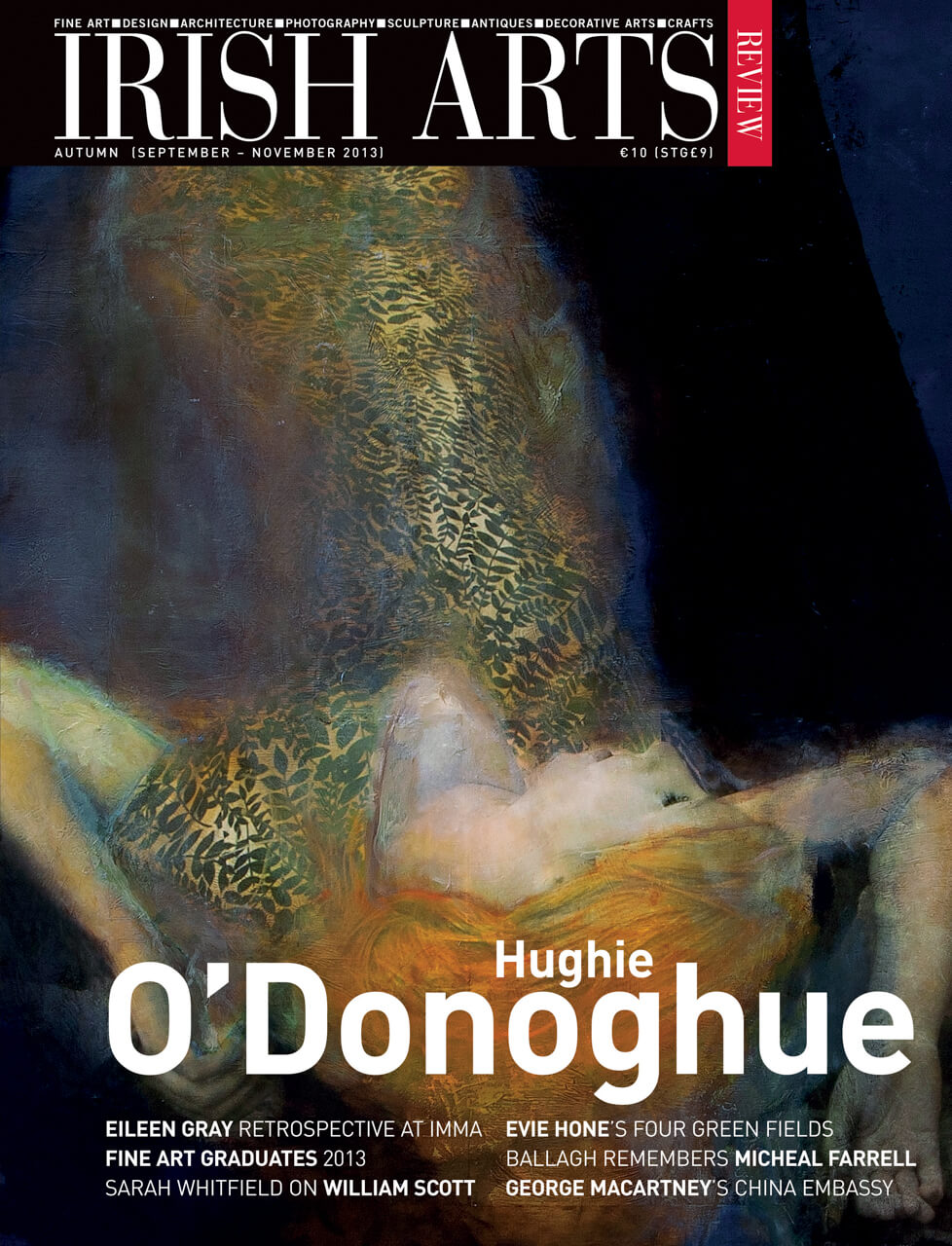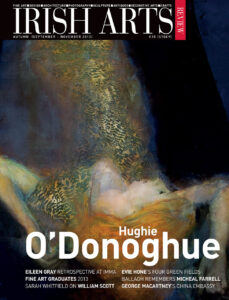

New information on the woman in John Lavery’s portrait enables Margarita Cappock to reveal La Dame aux Perles
The latter half of the 1890s marked the beginning of a significant period in John Lavery’s (1856-1941) career with his reputation becoming firmly established. He exhibited regularly at all the major European salons and secessions. Lavery’s regular contributions to the Munich Glaspalast led to commissions from German collectors and although his permanent residence was in London, he rented a winter studio in Berlin. Kenneth McConkey notes that Lavery’s years in Berlin still remain obscure. Further confirmation of this is the mystery that has surrounded the sitter of one of Lavery’s most intriguing Berlin portraits, La Dame aux Perles of 1901, a work the artist himself considered so important that he produced a copy of it in the 1920s. The painting was exhibited at the Salon in Paris in 1901, at the Secession, Berlin under the title Rose und Perle in 1902, at the Scottish Royal Academy in 1904, and the inaugural exhibition of the Municipal Gallery of Modern Art in 1908 before Hugh Lane presented the work to the collection in 1910. This three-quarter length portrait depicts a woman wearing a magnificent gown with a low, plunging neckline. The string of pearls around the woman’s long neck and the rose in the fingers of her right hand gave the painting its onetime title Rose und Perle.
The sitter was identified by the art critic, Walter Shaw Sparrow, as Marguerite von H√∂llrigl.1 McConkey notes a similarity between the features of the unidentified female sitter for Lavery’s La Marseillaise, from around the same time and questions whether this is also a portrait of Baroness Marguerite von H√∂llrigl and suggests that she may have been the French wife of a German aristocrat. However, recent information that has come to light has revealed that von H√∂llrigl led a much more eventful life than was previously thought. She was born Margit H√∂llrigl on 26 March 1876 in Budapest, which was part of the Austrian-Hungarian monarchy. Nothing is known about her youth but from 1895 to 1897 she was engaged as an actress at the theatres in Teplitz (Northern Bohemia and now Czech Republic), Graz and Linz. In 1898 she moved to Berlin where she was still registered as an actress. Around this time she changed her name from Margit to Marguerite adding a von to her last name, to give the illusion that her family was of noble origin. Lavery had painted portraits of a number of noble women in Berlin, so it seemed that Margit H√∂llrigl had become part of these circles and by 1903 she is registered in the Berlin directory as a ‘privatiere’, a woman of independent means. A court file in Berlin describes her as ‘Lebedame gr√∂√üten Stils’ (a courtesan on a grand scale). It would seem that she had established a ‘salon’ or high-class brothel frequented by high-ranking men. One of her lovers was Adolf Friedrich VI (1882-1918), the heir to the throne of the Grandduke of Mecklenburg-Stelitz in the north of Germany. For a time he was deployed at the cavalry regiment in Potsdam and around that time he met Marguerite and their affair lasted from 1904 to 1910. He was either bisexual or homosexual of which Marguerite was aware. She also knew of some of his homosexual liaisons while he was a soldier, was accepting of them and kept them a secret.
Apparently, he agreed to marry von H√∂llrigl in order to avoid becoming Grandduke and he had an arrangement with his brother Karl Borwin that after the death of his father he would renounce the title and Borwin would take the title instead. This plan never came to fruition as Borwin was killed in a duel and when Adolf Friedrich realized that his arrangement with Marguerite was obsolete he tried to pay her off with 5 million Reichsmark. At first she refused the money because she claimed that he had promised to marry her. After two years of quarrelling she seemed to accept his decision and around 1912 or 1913, she married a Count Bubna-Litic thus becoming a countess although none of the remaining exiled Bubna-Litic family know anything of this marriage. However, in 1914, after Adolf Freidrich had become Grandduke, she pushed the price higher and higher and claimed to have a letter which could prove that Adolf Friedrich was homosexual and also that she had an abortion for him in 1909. The letters were allegedly stored in a safety deposit box in London and with the outbreak of World War I negotiations came to a standstill. At the end of the war, Adolf Friedrich was to marry a princess in Munich but it seems that Marguerite heard about this and details from the compromising letters were sent to the Royal household in Berlin. On 23 February 1918 at Neustrelitz, Adolph Frederick committed suicide. Undaunted, Marguerite sued the late Grandduke’s mother and sisters but without success; the case was dismissed in 1928 when she was accused of having blackmailed the Grandduke. A court ruling of 1928 revealed that Hollrigl ran a high-class brothel in her apartment at 2, Altonaer Street in Berlin. In 1935 she left Germany by ship to Southhampton returning later that year to Vienna, then to Berlin. In 1937 her name appears for the last time in the directory of Berlin and after that all trace of her disappears. The supposition is that she was Jewish and was deported and murdered.
Acknowledgements: Sarah Maisey, former Conservation Intern at the Hugh Lane Gallery. Information regarding Marguerite von Höllrigl came to light through research by Matthias Vogler and Andreas Frost and kindly supplied to the Hugh Lane Gallery files on Lavery.
Margarita Cappock is Head of Collections, Dublin City Gallery The Hugh Lane.
1 Shaw Sparrow, Walter, John Lavery and his Work, Kegan Paul, Trench, Trubner & Co Ltd. London, 1911, p.180.



